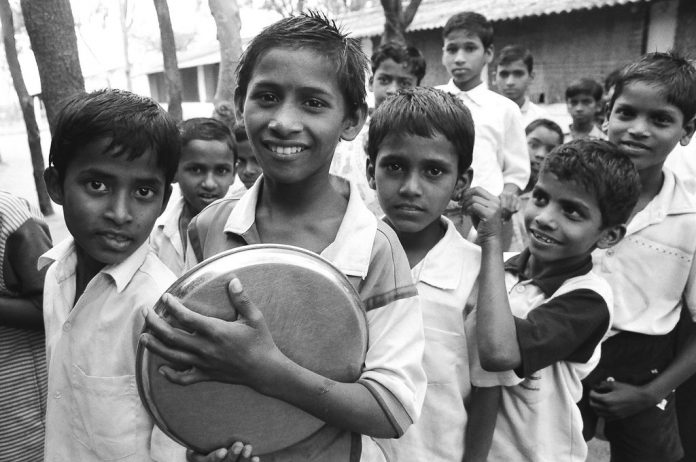This article is written by Nikhil Gayner, pursuing a Diploma in Labour, Employment and Industrial Laws (including POSH) for HR Managers from Lawsikho.
Table of Contents
Introduction
Child Labour is one of the most brutal diseases which India has witnessed so long. This evil practice leads child labour into an unskilled workforce, poor standard of living, pushing into poverty with no financial security. As per the report of UNICEF, based on India’s 2011 census, the number of child labourers in India is 10.1 million which includes 5.6 million boys and 4.5 million girls. Indian Constitution also envisioned that India shall provide infrastructure and resources for free and compulsory education to all children from age 6 to 14. (Article 21 and Article 45). India has a federal form of government and labour being a subject both central and state have legislated on child labour.
- The Factories Act of 1948: The Act prohibits the employment of children below 14 years of age in any factory.
- The Mines Act of 1952: The Act prohibits the employment of children below 18 years in mines.
- Child Labour Prohibition and Regulation Act 1986 – The Act prohibits the employment of children below 14 years of age.
- Right of Children to Free and Compulsory Education Act of 2009: The law mandates free and compulsory education to all children 6 to 14 years.
One of the important factors pushing children into employment is poverty and plays important role in increasing the number of child labour. Around 70% of these child labour comes from rural areas, or from areas where such children are deprived of primary education and forcefully pushed to earn for their families, thus to satisfy their hunger such children stars working on cheap rates and under poor working conditions. Whenever children below the age of 14 years involved in any type of economic activity either full time or part-time come under the purview of child labour. As per the Child Labour (Prohibition and Regulation) Act, 1986, a child is defined as any person below the age of 14, and the act prohibits the employment of a child including domestic work. According to this provision, no child would engage in any economic activity except he/she in case of helping the family during the vacation period or post-school hours.
Considering the negative impact child labour brings on an individual’s life, child labour has been considered a criminal offence in India. The children falling into the category of 14-18 years are called the adolescent group and the law does permit some provisions to work for them, provided the adolescent is not employed or not directly involved in activities such as mining, manufacturing of explosives and inflammable substances. The violation of such provisions attracts harsh penalties and also imprisonment in certain cases.
The practice of child labour is majorly concentrated in an informal economy, in the rural sector and in small scale industries. These child labourers due to their involvement as labour and direct involvement in hazardous, illegal work or degrading conditions do not evolve to their fullest potential and are always subdued. Today world is seeing growth in the Labour force participation rate however the ghost of child labour still haunts at the same time. Employers and various employment organisations must play an important role in this global fight against child labour employers can behave more responsible to not employ child labour in their workplaces, can mitigate the hazard for adolescents and should refuse to hire child labour. Also, employers can effectively play a major role in schooling, other remedial programmes and by raising public awareness.
Across India, child labourers are employed majorly in industries such as brick kilns, carpet weaving, garment making, domestic service, food and refreshment services (such as tea stalls), agriculture, fisheries, diamond industry, fireworks and mining. These children are always at risk of various other forms of exploitation.
India compared with global child labour
The latest global estimates indicate that 160 million children – 63 million girls and 97 million boys – were in child labour globally at the beginning of 2020, accounting for almost 1 in 10 of all children worldwide. According to the latest annual Child Labour Index (2019), which assesses 198 countries, manufacturing hubs, including China, India, Bangladesh, Vietnam and Cambodia have registered no tangible improvement in the ranking since 2016. India performs poorly on the Child Labour Index with a total score of 3.05 out of 10 (where 0.00 is the worst score possible). It is ranked 48th in the index and sits within the ‘high-risk category. India is among the 25% worst performing countries globally.
Child labour and Corporate Social Responsibility
Companies equally share the responsibility to respect human rights and to take all the necessary steps to identify, prevent and mitigate the impact of child labour. This responsibility is not only limited to their own circle but also includes their direct suppliers and contractors/subcontractors. In this regards various guidelines have been communicated regularly by UN Guiding Principles for Business and Human Rights to address human rights risks and child labour.
These guiding principles revolve around 3 fundamental pillars;
- State’s current responsibility to safeguard individuals from violating human rights.
- Role of an organisation as a powerful and important tool in economic growth and thus requiring them to adhere to prevailing laws including the protection of human rights.
- The need to take corrective actions and remedies against such problems.
These guiding principles consist of 31 principles that are enforceable to all the states and organisations. Principle 12 of Guiding principles instruct that the organisation must respect and protect the human rights of an individual including children. Such protection of rights for children is required from business/organisation because the effects are long-lasting. UNICEF also provides a comprehensive framework for the protection of the human rights of children and explains the impact of business and the well-being of children.
Under the charter of Children’s Rights and Business Principles, the following principles are very much related to arrest the problem of child labour.
- Principle 1: Organisations should commit to the protection of child rights.
- Principle 3: Organisations should contribute towards the elimination of child labour implied directly/indirectly in their businesses.
- Principle 4: Organisation should ensure the well-being of children in business-related activities.
- Principle 10: Organizations are required to enforce the government’s efforts to protect children rights.
Other than a few above-mentioned principles, UNICEF also makes it necessary for the organisations to protect children from the adverse impact on children due to working under various conditions. For example In India, UNICEF and its partners worked to reduce child labour rates by reducing the debt burden among families through the formation of self-help groups and increasing school enrolment. Life-skills education was provided to adolescent girls and child labourers in Andhra Pradesh and Maharashtra. The documentation of these and other positive experiences led to more effective advocacy with State partners and non-governmental organizations and to increased government budget allocations and donor support.
CSR and child labour
Various industries in India under their respective CSR programmes taking corrective steps to curb the child labour practice.
The Cotton Textiles Export Promotion Council (TEXPROCIL) has stressed the importance of eradicating child labour in any form of employment across the value chain, mainly importing countries preparing a country-specific restriction list of products that use child labour and taking steps like mandatory registration of all carpet looms and adopting a code of conduct for eradication of child labour apart from introducing various welfare facilities is need of hours.
Ambuja Cement Foundation
Supports the Better Cotton Initiative; a global effort that promotes sustainable cotton farming standards and practices across 21 countries, ACF is one of its implementation partners in India and currently works with 1.21 lakh farmers to uphold BCI’s well-defined principles and criteria and prohibit the use of child labour on farms. Also, many organisations are considering the option of obtaining help and supporting various NGO’s working towards child labour issues. Below are examples of a few such NGOs and their activities.
NGO working against child labour
- Kailash Satyarthi Children’s Foundation: The Child-Friendly Village (Bal Mitra Gram) is the Kailash Satyarthi Foundation’s preventive model of youth empowerment and village development that protects children from labour by ensuring their rights, wellbeing and voices are central to the village community.
- Hand in Hand India: Manages evening classes for children working as labourers.
- Smile Foundation: Works towards providing basic school education to less privileged children.
- Don Bosco Balprafulta: DBBP launched project Rihaee in 2004 for child labourers. The issue of child labour was found to be widespread in the city and hence the project focused on rescuing children from exploitative situations. Project Rihaee was successful in rescuing thousands of children through its rescue operations.
Conclusion
Removing child labour practice requires inclusive efforts from governments, public, and private companies and end-term customers. India in the recent past got a stronger attraction towards CSR activities; earlier CSR activities were more focused on philanthropic activities, however now the focus is gradually shifting towards the stakeholder-oriented model. The corporation needs to work very closely with the social sector and need to improve standards and strict rules towards not employing children in prohibited areas/channels. Corporate organisations need to stay vigilant and make sure that the CSR activities are helping children in taking active participation in the development process. Also, Corporates can follow the proper due diligence process with their relevant internal and external stakeholders.
Making sure by engaging with their suppliers/contractors/subcontractors to work towards improvement in managing child labour issues. Mitigating the problem by taking into confidence the local authorities. Comprehensive action towards removing child labourers from hazardous work. Child labour is a very complex socio-economic issue, which requires attention and action from all strata of society and requires a multi-dimensional approach to eliminate. Even though the corporates are playing a major role by implementing various states and international initiatives, still massive mass sensitization is required to explain the vicious ill effects of Child Labour and organisations role to curb this issue.
References
- https://thecsrjournal.in/world-day-against-child-labour-top-india-ngos-nonprofits/
- https://thecsrjournal.in/corporates-can-lead-when-it-comes-to-eradicating-child-labour/
- https://indiacsr.in/csr-of-indian-textile-industry-saying-no-to-child-labor/
- https://www.unicef.org/infobycountry/files/ChildLabour.pdf
- https://www.censusindia.gov.in/2011census/population_enumeration.aspx
Students of Lawsikho courses regularly produce writing assignments and work on practical exercises as a part of their coursework and develop themselves in real-life practical skills.
LawSikho has created a telegram group for exchanging legal knowledge, referrals, and various opportunities. You can click on this link and join:
 Serato DJ Crack 2025Serato DJ PRO Crack
Serato DJ Crack 2025Serato DJ PRO Crack











 Allow notifications
Allow notifications



